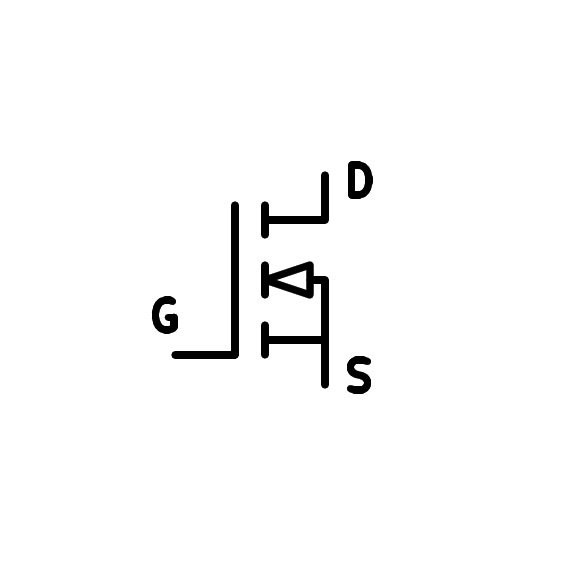14. The mosfet transistor¶
The mosfet transistor is a type of transistor that allows the passage of more or less electrical current between its Drain and Source terminals, depending on the voltage at its Gate terminal.

N-channel mosfet transistor symbol.¶
- The three terminals of a mosfet transistor are:
- Drain (Drain, letter D): terminal through which the current enters.
- Source (Source, letter S): terminal through which the current comes out.
- Door (Gate, letter G): voltage control terminal.
There are two types of mosfets, those with Negative channel and those with Positive channel. The most common are the N (Negative) channel because they conduct electricity much better than their P (Positive) channel versions.
Advantages¶
The mosfet is a transistor that does not need a constant current input at its control terminal in order to function, it works at a much higher speed than the bipolar transistor and is capable of conducting large currents with very low voltage drops between its terminals.
All these advantages of mosfets have helped them gradually replace bipolar transistors in all types of analog and digital circuits.
Bipolar transistors, for their part, have great resistance to electrostatic discharges and are cheap, which makes them still preferable in certain applications.
Simulation¶
In the following simulation, two Darlington bipolar transistors have been replaced by an N-channel mosfet transistor with advantage.
Exercises¶
- Draw a simplified schematic of an N-channel mosfet transistor, with the letter of all its terminals. What does each letter mean?
- Draw a realistic schematic of a mosfet transistor working as a voltage controlled switch that turns a lamp on and off.
- What function does a mosfet transistor perform?
- List three advantages of mosfet transistors over bipolar transistors.
- In the simulation above, it measures the voltage between the drain and source terminals of the mosfet when the lamp is on. What voltage do they have?
- Add to the previous simulation a similar circuit that uses two Darlington transistors instead of a mosfet. What voltage is between collector and emitter when the lamp is on?